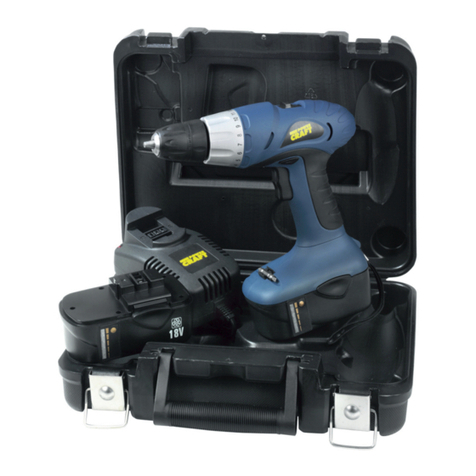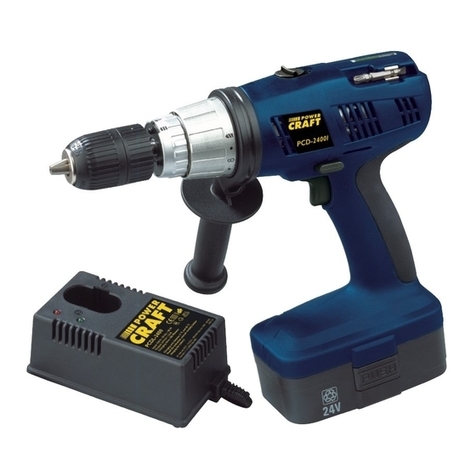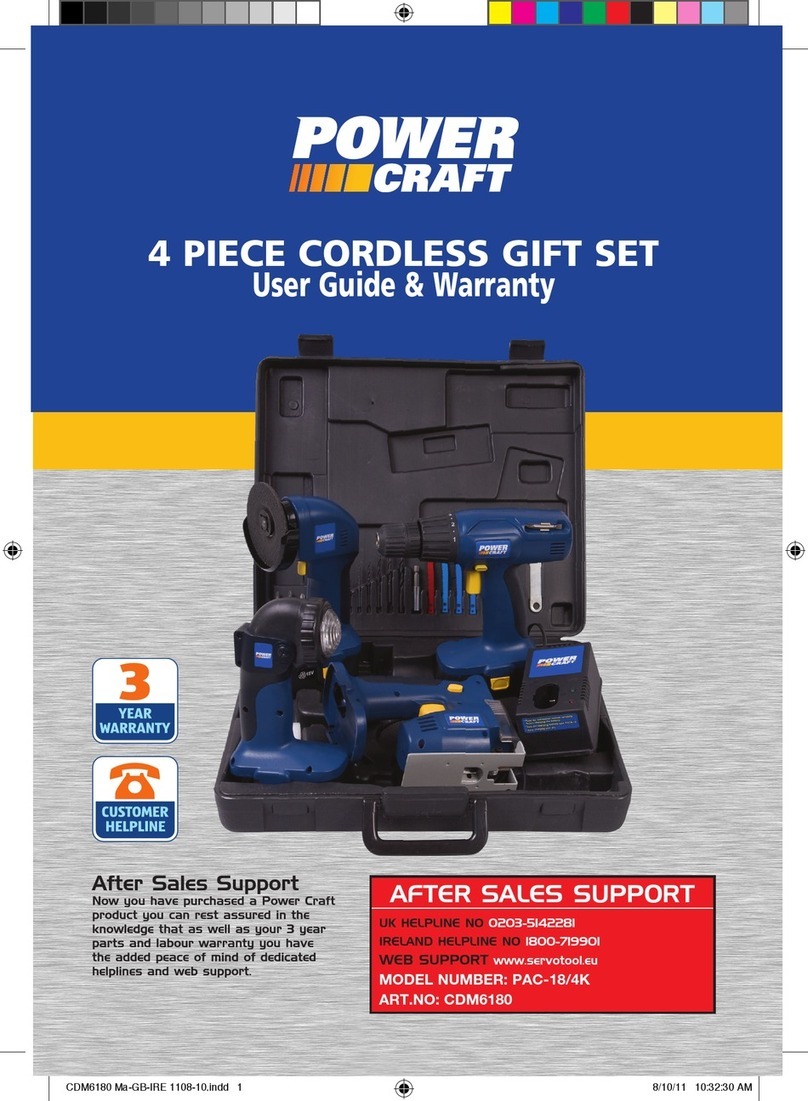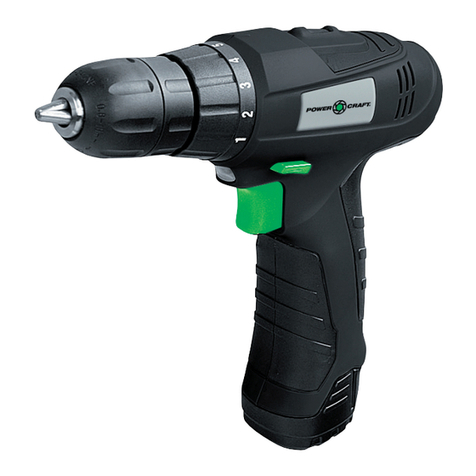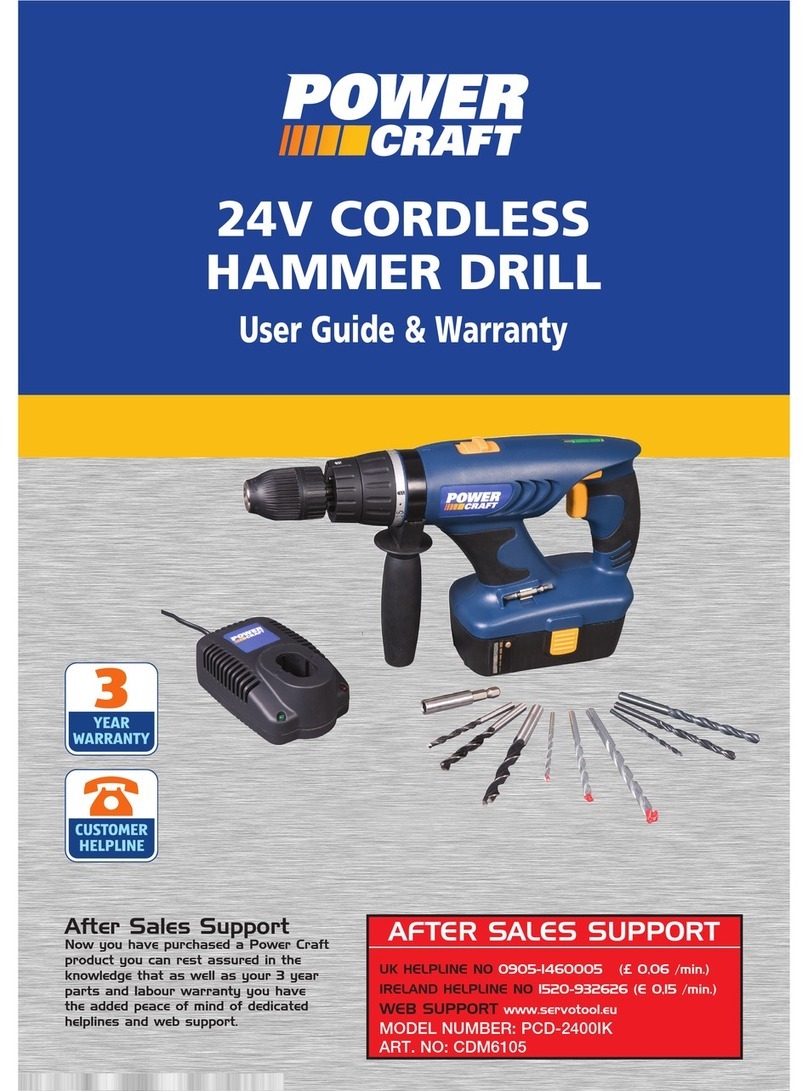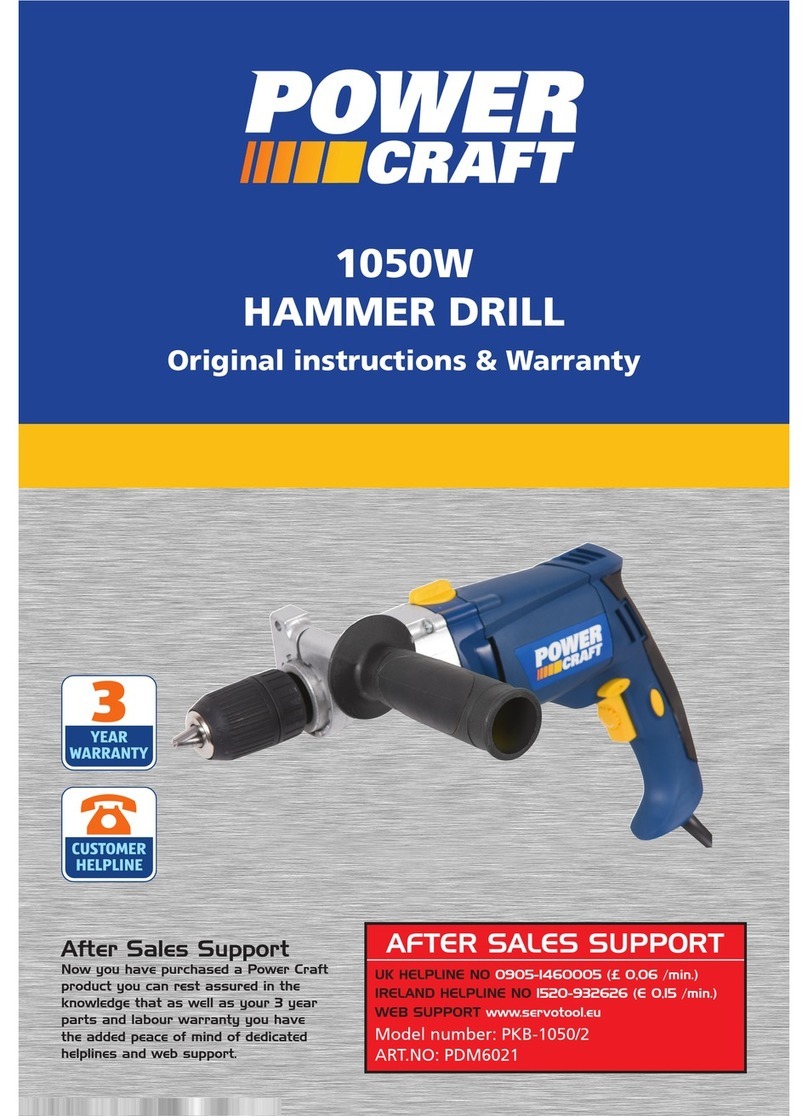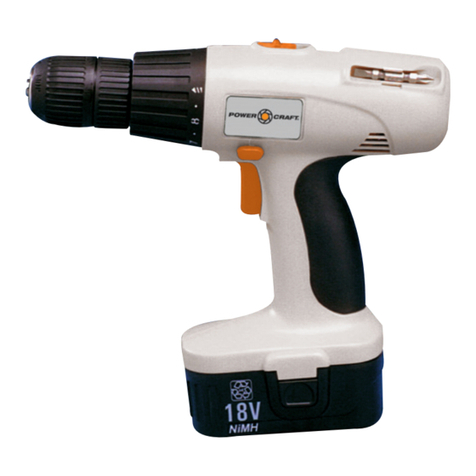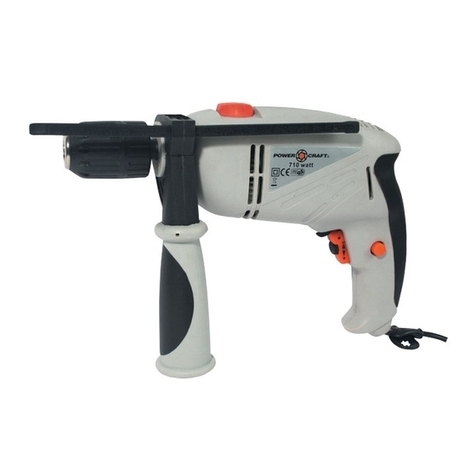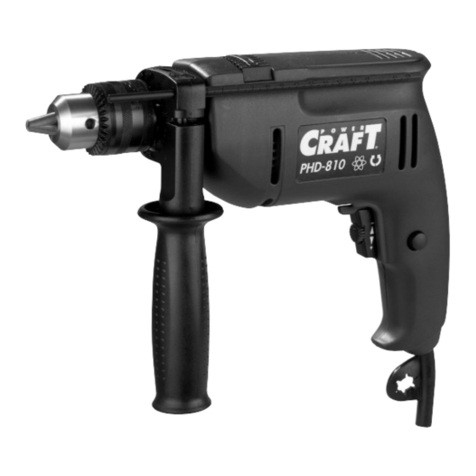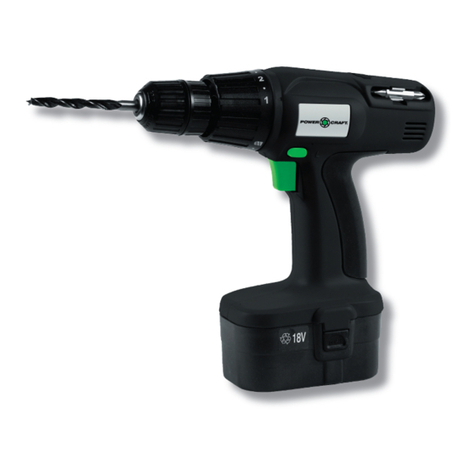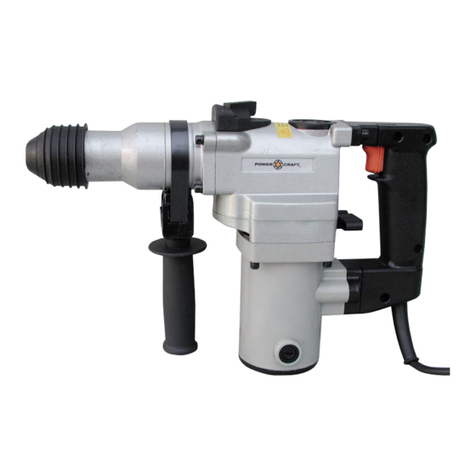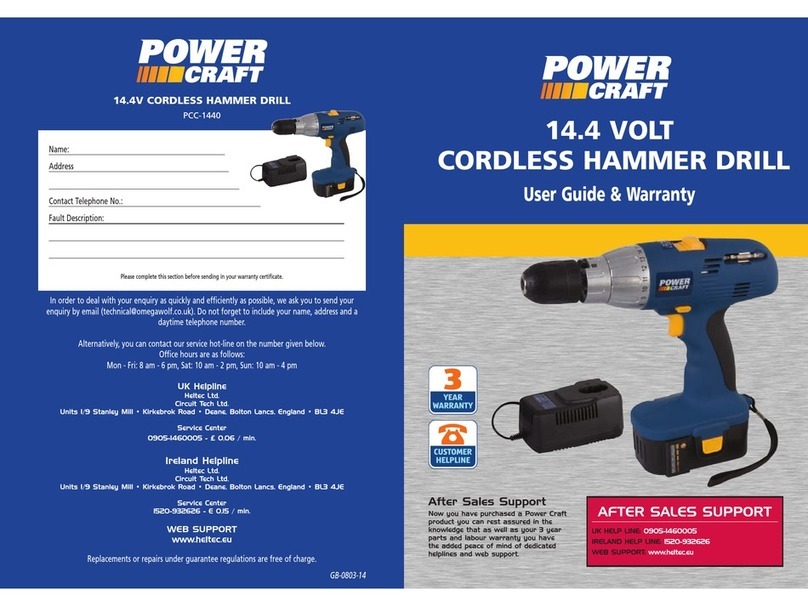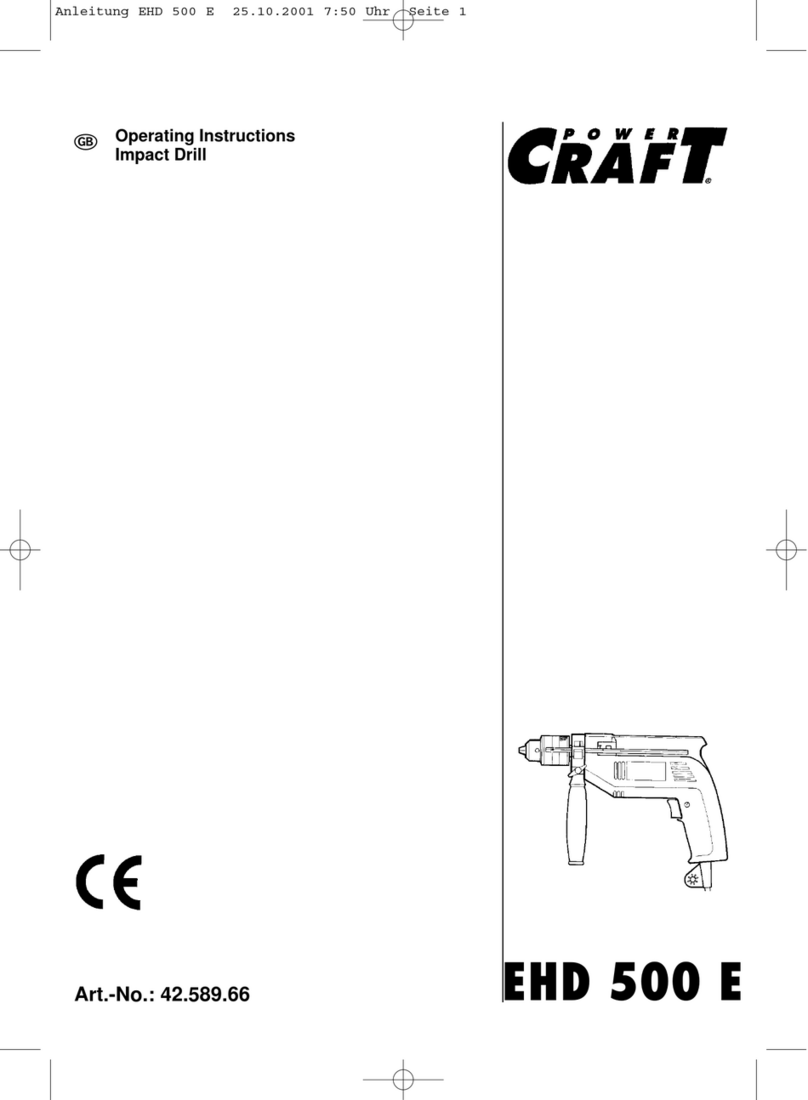Powercraft 9
3. Guard against electric shock
Prevent body contact with grounded surfaces (e.g.
pipes, radiators, ranges refrigerators).
4. Keep children away
Do not let visitors contact tool or extension cord.
All visitors should be kept away from work area.
5. Store idle tools
When not is use, tools should be stored in dry, high,
or locked-up place, out of reach of children.
6. Don’t force tool
It will do the job better and safer at the rate for which
it was intended.
7. Use right tool
Don’t force small tools or attachments to do the job
of heavy duty tool. Don’t use tools for purposes not
intended.
8. Dress properly
Do not wear loose clothing or jewelry. They can be
caught in moving parts. Rubber gloves and nonskid
footwear are recommended when working
outdoors. Wear protective hair covering to contain
long hair.
9. Use safety glasses
Also use face or dust mask if cutting operation is
dusty.
10.Don’t abuse cord
Never carry tool by cord or yank it to disconnect it
from receptacle. Keep cord from heat, oil and sharp
edges.
11.Secure work
Use clamps or a vise to hold work. It’s safer than
using your hand and it frees both hands to operate
tool.
12.Don’t overreach
Keep proper footing and balance at all times.
13.Maintain tools with care
Keep tools sharp and clean for better and safer
performance. Follow instructions for lubricating and
changing accessories. Inspect tool cords periodically
and, if damaged, have repaired by authorized service
facility. Inspect extension cords periodically and
replace if damaged. Keep handles dry, clean and free
from oil and grease.
14.Disconnect tools
When not in use, before servicing, and when
changing accessories such as blades, bits and cutters.
15.Remove adjusting keys and wrenches
Form the habit of checking to see that keys and
adjusting wrenches are removed from tool before
turning it on.
16.Avoid unintentional starting
Don’t carry plugged-in tools with finger on switch.
Be sure switch is off when plugging in.
17.Outdoor use extension cords
When tool is used outdoors, use only extension
cords intended for use outdoors and so marked.
18.Stay alert
Watch what you are doing. Use common sense. Do
not operate tool when you are tired.
19.Check damaged parts
Before further use of the tool, a guard or other part
that is damaged should be carefully checked to
determine that it will operate properly and perform
its intended function. Check for alignment of moving
parts, binding of moving parts, breakage of parts,
mounting, and any other conditions that may affect its
operation. A guard or other part that is damaged
should be properly repaired or replaced by an
authorized service center unless otherwise indicated
elsewhere in this instructions manual. Have defective
switches replaced by an authorized center. Do not
use tool if switch does not turn it on and off.
20.Warning
The use of any other accessory or attachment other
than recommended in this operation instructions or
the catalog may present a risk of personal injury.
21.Have your tool repaired by an expert
This electric appliance is in accordance with the
relevant safety rules repairing of electric apliances
may be carried out only by experts otherwise it may
cause considerable danger for the user.
22.Connect the dust extraction device
Whenever there are facilities for fitting a dust
extraction system, make sure it is connected and
used.
IMPORTANT SAFETY NOTES ON CHARGER
AND BATTERY BLOCK
If you come into contact with acid from the battery
block, rinse it off with water immediately. If acid gets
into your eyes, rinse out your eyes at
once with water and contact a doctor immediately!
1. Read and note the operating instructions and safety
notes for the charger and battery block before use!
2. NB! Only use the charger and battery block that
were supplied by the manufacturer - otherwise you
will risk an accident.
3. Protect the charger, battery block and power tool
from moisture, e.g. rain or snow.
4. Always check that all cables are connected correctly
before using the charger.
5. If you discover that a cable is damaged, you should
not use the charger again. Have the damaged cable
replaced immediately.
6. When the charger is not in use, the mains plug should
be removed from the power socket. Do not pull out
the plug by grasping the cable.
7. If the charger has been dropped or has otherwise
been exposed to high mechanical stresses, you
should have it checked for damage by an authorised
dealer before using it again. Damaged parts should be
repaired.
8. Exercise caution when handling the battery block
and do not drop it or expose it to impacts.
9. Never attempt to repair the charger or battery block
yourself. Repairs must always be carried out by an
authorised dealer - otherwise you risk an accident.
10. Before cleaning or servicing the charger or battery
block, always pull the plug from the charger socket.
11. Never charge the battery block when the ambient
temperature is below 10°C or above 40°C.
12. The air vents in the charger must never be blocked.
4Powercraft
